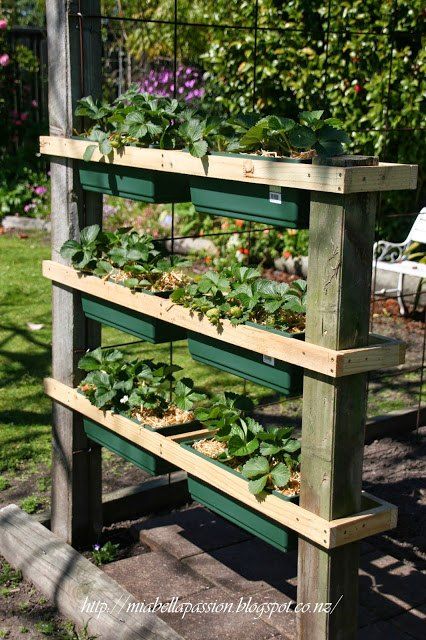Have you been searching for drought-tolerant landscaping ideas to create a sustainable and visually appealing yard? As climate change continues to impact weather patterns around the globe, it’s more important than ever to understand the significance of drought-tolerant landscaping. By using plants and design techniques that thrive in dry conditions, you can not only conserve water but also reduce the maintenance required for your outdoor space.
In this article, we will explore the benefits of drought-tolerant landscaping, how to select the right plants for a low-water landscape, tips for designing an aesthetically pleasing yard, efficient irrigation strategies, and ideas specifically tailored for small spaces. Additionally, we will provide guidance on maintaining a drought-tolerant landscape and showcase real-life success stories of stunning and functional designs.
Whether you’re looking to minimize your environmental impact or simply want to save on water bills, embracing drought-tolerant landscaping can have a positive impact on both the environment and your wallet. Let’s delve into the importance of sustainable landscaping and discover how you can create an attractive outdoor space that thrives in dry conditions.
Benefits of Drought-Tolerant Landscaping
Drought-tolerant landscaping offers a multitude of benefits, with two significant advantages being the conservation of water and the reduction of maintenance needs. By incorporating plants that are resilient in dry conditions, homeowners can significantly decrease their outdoor water usage.
According to the Environmental Protection Agency (EPA), traditional lawns require an average of 55 gallons of water per square foot each year, while drought-tolerant landscapes may only need about 20 gallons or less. This substantial decrease in water consumption not only conserves a vital resource but also contributes to lower utility bills for homeowners.
In addition to water conservation, drought-tolerant landscaping reduces the overall maintenance required to upkeep a yard or garden. With plants that have adapted to thrive in arid environments, there is less need for frequent watering, fertilizing, and pesticide application.
This means homeowners can spend less time mowing, pruning, and tending to their outdoor spaces, allowing for more leisure time and a lower dependence on chemical treatments. Overall, embracing drought-tolerant landscaping can lead to not only environmental benefits but also cost savings and reduced labor for homeowners.
Furthermore, by reducing the use of lawnmowers and other equipment powered by fossil fuels, drought-tolerant landscapes contribute positively to air quality and greenhouse gas emissions. The decreased need for fertilizers and pesticides further supports environmental conservation efforts by minimizing harmful runoff into local waterways. Overall, the benefits of adopting drought-tolerant landscaping ideas extend beyond individual properties and have far-reaching impacts on both personal finances and environmental sustainability.
| Water Conservation | Maintenance Reduction |
|---|---|
| Decrease outdoor water usage significantly | Less need for frequent watering, fertilizing, and pesticide application |
| Contributes to lower utility bills | Reduction in mowing, pruning, and labor-intensive tasks |
| Lowers dependence on chemical treatments | Contributes positively to air quality & greenhouse gas emissions |
Selecting Drought-Tolerant Plants
When it comes to drought-tolerant landscaping ideas, selecting the right plants is key in creating a sustainable and visually appealing yard. Fortunately, there are numerous options for plants that thrive in dry conditions and require minimal water once established. Here are some types of drought-tolerant plants to consider for your landscape:
- Succulents: These water-storing plants come in a variety of shapes and sizes, making them perfect for adding interest to the landscape. Some popular succulents include aloe vera, agave, and sedum.
- Perennials: Many perennial flowers and ornamental grasses have adaptations that enable them to withstand periods of drought. Examples of drought-tolerant perennials include lavender, yarrow, and Russian sage.
- Native Plants: Choosing native plants that are naturally adapted to the local climate can contribute to a successful drought-tolerant landscape. Research which native species thrive in your area, such as California poppies for arid regions or penstemon for mountainous areas.
In addition to these types of plants, it’s important to consider their specific water needs, sunlight requirements, and soil conditions when designing a drought-tolerant landscape. By carefully selecting plants that are well-suited to dry conditions, you can create a beautiful and low-maintenance yard that conserves water.
Moreover, incorporating a variety of textures, colors, and blooming seasons can enhance the visual appeal of a drought-tolerant garden. Mixing different types of foliage and flowers can add depth and interest to the landscape while promoting biodiversity. With proper planning and plant selection, a diverse range of drought-tolerant plants can thrive together in a cohesive and sustainable design that benefits both the environment and homeowners.
Designing a Drought-Tolerant Landscape
Consider Xeriscaping
Xeriscaping is a landscaping method that uses low-water, drought-tolerant plants to create an aesthetically pleasing garden. This approach not only conserves water but also reduces the need for extensive maintenance. When designing a xeriscape, consider using native plants that are well-adapted to the local climate and soil conditions. Incorporating hardscaping elements such as gravel, rocks, and mulch can add texture and visual interest to the landscape while reducing the need for irrigation.
Use Color and Texture
When selecting plants for your drought-tolerant landscape, pay attention to their color and texture. By choosing a variety of plants with different foliage colors and textures, you can create visual appeal in your yard while still adhering to water-saving principles. For example, ornamental grasses with their feathery plumes can add movement to the landscape, while succulents with their unique shapes and vibrant hues can serve as eye-catching focal points.
Group Plants Based on Water Needs
To ensure efficient water usage in your drought-tolerant landscape, group plants with similar water requirements together. This allows you to tailor your irrigation schedule more effectively, providing adequate moisture to each plant without overwatering any of them. By strategically organizing your garden beds based on water needs, you can maintain a healthy and thriving landscape while still conserving water.
Incorporating these design tips into your drought-tolerant landscaping ideas will help you create a visually appealing yard that’s also sustainable and environmentally conscious.
Irrigation Strategies
When it comes to maintaining a drought-tolerant landscape, efficient irrigation strategies are essential for the health and longevity of your plants. By implementing the right watering techniques, you can ensure that your garden not only survives but thrives in dry conditions. Here are some helpful tips for effectively watering your drought-tolerant garden:
- Install a drip irrigation system: Drip irrigation delivers water directly to the roots of your plants, minimizing water waste through evaporation and runoff. This targeted approach ensures that each plant receives the precise amount of water it needs to thrive.
- Use mulch to retain moisture: Applying a layer of mulch around your plants helps to lock in moisture and prevent soil erosion. This natural barrier reduces the need for frequent watering and helps regulate soil temperature, creating a more stable environment for your drought-tolerant plants.
- Water deeply and infrequently: Instead of shallow, frequent watering, focus on deep irrigation sessions less often. This encourages plant roots to grow deeper into the soil in search of moisture, making them more resilient during dry spells.
In addition to these techniques, it’s important to be mindful of local water restrictions and regulations when designing an irrigation plan for your drought-tolerant landscape. By adhering to these guidelines and implementing water-efficient practices, you can maintain a beautiful and sustainable garden while conserving this precious resource.
Overall, by incorporating these irrigation strategies into your drought-tolerant landscaping design, you can create a thriving outdoor space that not only looks visually appealing but also contributes positively to the environment by conserving water resources.
Drought-Tolerant Landscaping Ideas for Small Spaces
For homeowners or property owners with limited outdoor space, implementing drought-tolerant landscaping ideas can be an efficient and visually appealing solution. By maximizing small areas with low-water usage, it is possible to create an attractive and sustainable landscape even in spaces with restrictions. Whether it’s a small backyard, a narrow strip of land, or a compact urban garden, there are various ways to design a drought-tolerant landscape that flourishes in dry conditions.
Container Gardening
One of the most effective drought-tolerant landscaping ideas for small spaces is container gardening. Utilizing pots, hanging baskets, and other containers allows for flexibility in placement and design. Succulents, cacti, lavender, and ornamental grasses are all excellent choices for container gardening in small spaces. They require minimal watering and can thrive in the confined environment of a container.
Vertical Gardens
Maximizing vertical space is another key strategy for drought-tolerant landscaping in small areas. Vertical gardens can be created using trellises, wall-mounted planters, or even repurposed materials such as wooden crates. Drought-tolerant plants like climbing vines, air plants, and herbs are well-suited for vertical gardens. Not only does this approach conserve ground space, but it also provides an opportunity to add greenery to walls or fences.
Xeriscaping Techniques
Xeriscaping is a landscaping method that focuses on reducing water usage through the use of native plants and efficient irrigation practices. In small spaces, implementing xeriscaping techniques can make a significant difference in water conservation.
Incorporating hardscaping elements like gravel pathways or decorative rocks can also enhance the overall aesthetic while minimizing the need for excessive watering. In addition to selecting appropriate drought-tolerant plants for the region’s climate, considering the layout and composition of hardscaping features is essential for successful xeriscaping in limited areas.
Maintaining Drought-Tolerant Landscapes
Once you have designed and installed your drought-tolerant landscape, it is important to maintain it properly to ensure its longevity and sustainability. With the right care and attention, these landscapes can continue to thrive with minimal water usage. Here are some tips for maintaining drought-tolerant landscapes:
First, regular maintenance is essential for keeping your drought-tolerant landscape healthy. This includes removing weeds, pruning plants as needed, and monitoring for any signs of pests or diseases. By staying on top of these tasks, you can prevent any issues from getting out of control and maintain the overall health of your garden.
Secondly, while drought-tolerant plants require less water than traditional landscaping, they still need some irrigation to thrive. It’s important to establish a watering schedule that meets the specific needs of the plants in your landscape. This may involve deep, infrequent watering rather than frequent shallow watering to encourage deep root growth and water retention.
Lastly, proper mulching can also be beneficial for maintaining a drought-tolerant landscape. Mulch helps retain soil moisture, suppress weeds, and regulate soil temperature – all of which contribute to the overall health of your plants.
| Maintenance Task | Frequency |
|---|---|
| Weeding | Weekly |
| Pruning | As needed |
| Irrigation | Varies by plant needs and weather conditions |
| Mulching | Annually or as needed |
Success Stories
One excellent example of a successful drought-tolerant landscape is the use of native plants in a residential backyard. By incorporating native plant species that are well-adapted to the local climate and soil conditions, homeowners can create an attractive and sustainable outdoor space that requires minimal water and maintenance.
In this particular case, the use of drought-tolerant grasses, wildflowers, and shrubs not only adds beauty to the landscape but also provides crucial habitat for local wildlife such as birds, butterflies, and beneficial insects.
Another inspiring success story is the transformation of a commercial property into a stunning drought-tolerant garden. By replacing water-intensive grass lawns with low-water usage alternatives such as gravel pathways, succulent gardens, and desert landscaping elements, the property not only reduced its water consumption but also significantly decreased ongoing maintenance costs. Additionally, the new design attracted positive attention from customers and the community for its environmentally friendly approach and aesthetically pleasing appearance.
Lastly, there is an impressive case of a public park that was redesigned to showcase the potential of drought-tolerant landscaping on a larger scale. The park’s new design featured a diverse array of native plants, permeable paving for walkways and patios, efficient irrigation systems, and water-saving features such as rainwater harvesting.
This transformation not only demonstrated the beauty and functionality of drought-tolerant landscapes but also served as an educational resource for visitors interested in implementing similar practices in their own homes or communities.
These success stories serve as powerful examples of how drought-tolerant landscaping ideas can be implemented in various settings to create beautiful, functional outdoor spaces while conserving water resources and reducing environmental impact.
Conclusion
In conclusion, drought-tolerant landscaping offers numerous benefits for both the environment and homeowners. By embracing low-water usage plants and sustainable design techniques, individuals can significantly reduce water consumption and maintenance costs while still creating visually appealing outdoor spaces. Selecting the right drought-tolerant plants and implementing efficient irrigation strategies are essential for the success of this landscaping approach.
It is important to note that with careful planning and consideration, even small spaces can be transformed into beautiful and functional drought-tolerant landscapes. Maximizing limited areas with low-water usage can have a positive impact on water conservation efforts while still providing a stunning outdoor retreat.
Overall, the positive effect of drought-tolerant landscaping cannot be overstated. By adopting these practices, individuals can contribute to water conservation efforts, reduce their environmental footprint, and save money in the long run. Embracing the use of drought-tolerant landscaping ideas is not only beneficial for personal enjoyment but also plays a crucial role in promoting sustainability and making a positive impact on our environment.
Frequently Asked Questions
What Is a Type of Landscape That Needs Very Little Water?
One type of landscape that needs very little water is a desert landscape. This type of landscape typically consists of drought-resistant plants such as cacti, succulents, and other native species that have adapted to arid conditions. By using low-water plants and minimal irrigation, a desert landscape can thrive with very little water.
How Do I Make My Yard Drought Resistant?
To make your yard drought resistant, you can incorporate various strategies such as xeriscaping, which involves using drought-tolerant plants, mulching to retain soil moisture, installing efficient irrigation systems like drip irrigation, and removing excessive grass in favor of hardscaping or low-water ground covers.
Additionally, practicing water-wise gardening techniques such as proper timing for watering and grouping plants with similar watering needs can help conserve water in your yard.
How Do You Landscape Without Water?
Landscaping without water involves planning and designing a visually appealing outdoor space using drought-tolerant plants and water-saving methods. This can include xeriscaping techniques like selecting indigenous plants that are adapted to local climate conditions, creating permeable hardscapes to reduce runoff, implementing rainwater harvesting systems, and utilizing strategies such as soil amendment and proper plant placement to minimize water usage.
By designing a landscape that requires minimal irrigation and maintenance, you can create an attractive outdoor environment while conserving water resources.

Welcome to my gardening blog! I am passionate about plants and enjoy sharing my knowledge and experiences with others. In this blog, I will write about everything related to gardening, from tips on how to get started to updates on my own garden projects.





